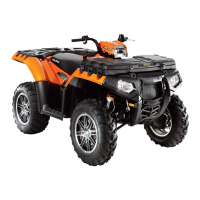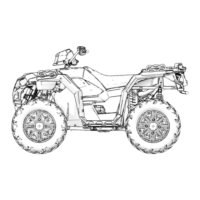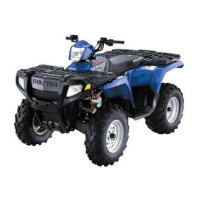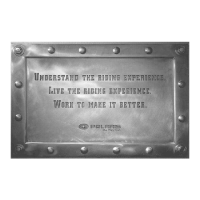7.4
WHEELS
WHEEL REMOVAL
1. Position the vehicle on a level surface.
2. Stop the engine, place the transmission in PARK and
lock the parking brake. Loosen the wheel nuts
slightly.
3. Elevate the appropriate side of the vehicle by placing
a suitable stand under the footrest frame.
4. Remove the wheel nuts and remove the wheel.
WHEEL INSTALLATION
1. Verify the transmission is still in PARK and the
parking brake is locked.
2. Place wheel in correct position on the wheel hub. Be
sure the valve stem is toward the outside and
rotation arrows on the tire point toward forward
rotation.
3. Install wheel nuts and finger tighten them. Align the
center of wheel holes with center of the tapered nuts.
NOTE
It is possible to torque the wheel nut on a steel rim
without the nut being centered in the hole. Be sure to
center the wheel nuts before applying torque to prevent
wheel nuts from coming loose.
4. Carefully lower the vehicle to the ground.
5. Torque wheel nuts to the proper torque specification.
TORQUE
Lug Nuts
Aluminum Wheels: 75 ft. lbs (102 Nm)
Steel Wheels: 45 ft. lbs (61 Nm)
CAUTION
Improperly installed wheels could affect vehicle
handling and tire wear. On vehicles with tapered rear
wheel nuts, make sure tapered end of nut goes into
taper on wheel. Be sure to properly torque and install all
wheel nuts.
FINAL DRIVE

